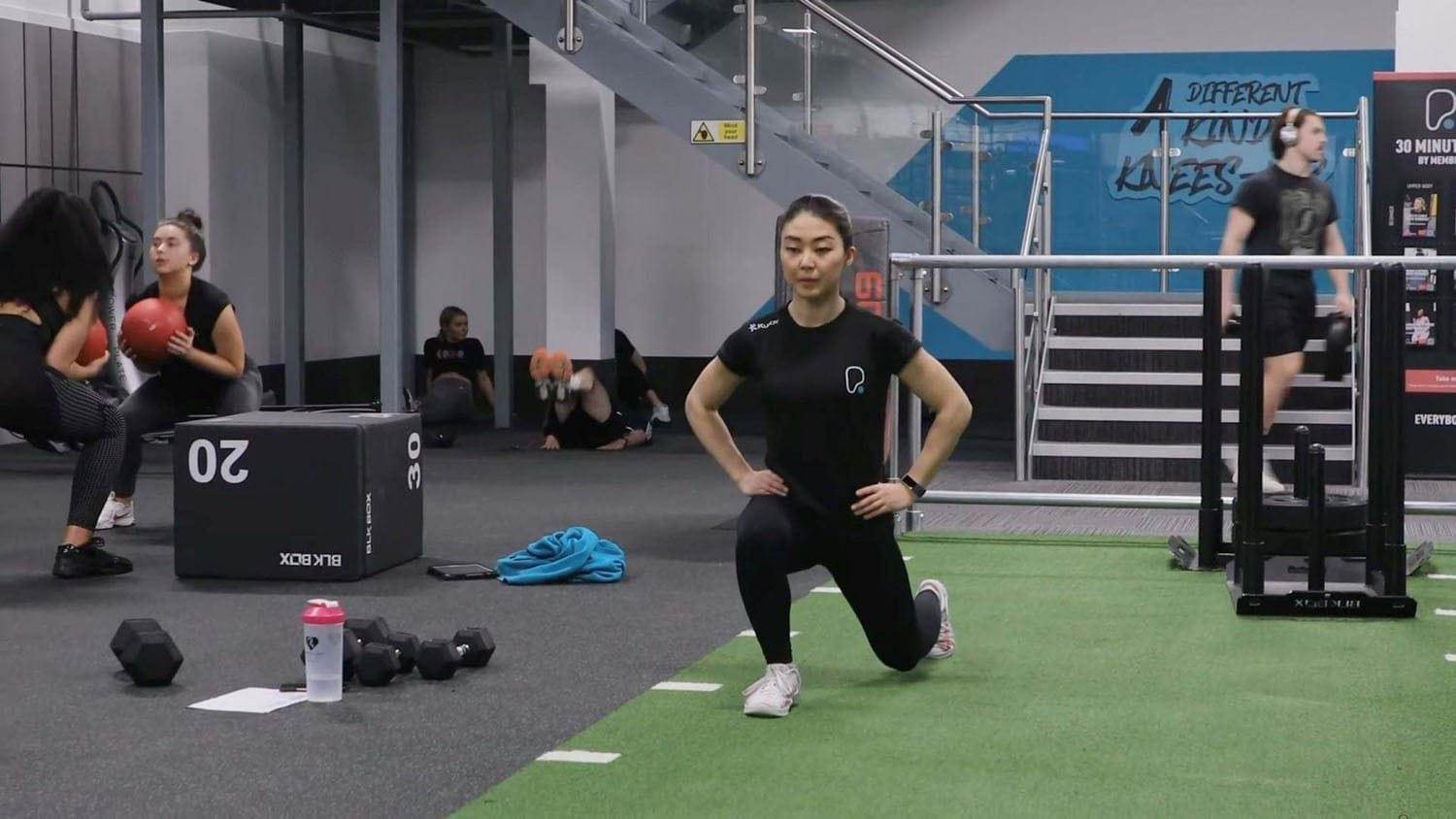Walking Lunges
What Is A Walking Lunge?

The walking lunge is a variation of the forward lunge where the body is propelled forward by lunging on the back leg, instead of returning to standing through the front leg. Unilateral exercises like walking lunges are great for identifying and reducing imbalances between the two limbs.
Like stationary lunges, walking lunges are a compound exercise that strengthens multiple muscle groups in the body, particularly the quads, hamstrings, and glutes, with the calves and core also worked. The walking lunge variation adds a greater challenge to balance and stability as it involves shifting your weight while on one leg.
Walking lunges get the heart rate up and can work well as part of a HIIT circuit when performed bodyweight or with light weights, or part of a strength training routine by adding heavier weights.
Check out our other lunge variations: jumping lunges, clock lunges, lateral lunges, curtsy lunges, sprinter lunges
Commonly Asked Questions On Walking Lunges
Walking lunges can help to strengthen the glutes but they are not the main muscle group worked. When paired with glute focused exercises like hip thrusts and glute kickbacks, walking lunges will help to build strong and stable glutes.
If your goal is to improve strength, aim to do 3 sets of 10-12 reps per leg, making sure to choose a weight that takes you close to failure in this range. For endurance, 12-15 is a good goal. If you’re including walking lunges as part of a HIIT circuit, try doing as many reps as possible in a certain amount of time.
Walking lunges predominantly work the quads, with the hamstrings, glutes, calves, and core all also worked. Performing walking lunges will also help to improve balance and stability.
Walking lunges are not necessarily better or worse than stationary lunges. Walking lunges may be better at improving balance, stability and core strength as it is more challenging to these areas, but this means most people will be able to lift heavier with stationary lunges making it better for strength and hypertrophy. Choose the lunge which suits your goals or try both in your routine.
Walking Lunge Tips
Having correct form will help to reduce the risk of losing balance and injuring yourself with walking lunges. Keep your core engaged and torso upright throughout the whole exercise. Avoid stepping too far forward and make sure you step your foot in line with your hip, not in front of the other foot.
How To Do Walking Lunges
Stand tall with feet about shoulder-width apart. You can rest your hands on your hips.
Brace your core and take a big step forward with one leg and bend your front knee till your thigh is parallel with the floor. You back leg should be bent, with your shin parallel to the floor.
Extend your front leg and push through the foot to stand up.
As you stand, step the back leg forward and bend into a lunge.
Repeat for however many reps required.
If you’re not sure if any of the above exercises are suitable for you, please consult your doctor before you start it. Need guidance on how to perform the exercise? Ask a personal trainer at your gym.